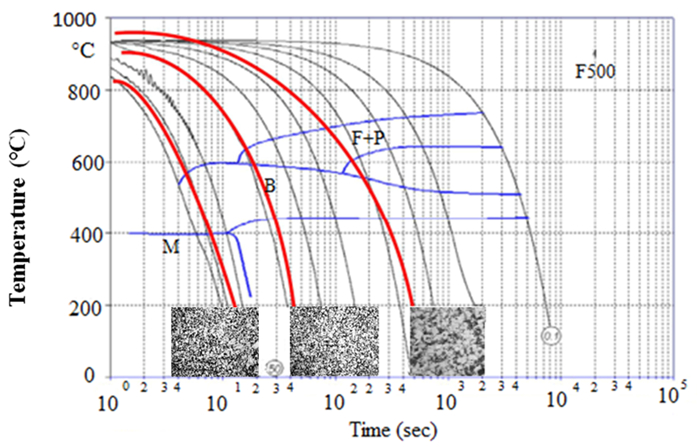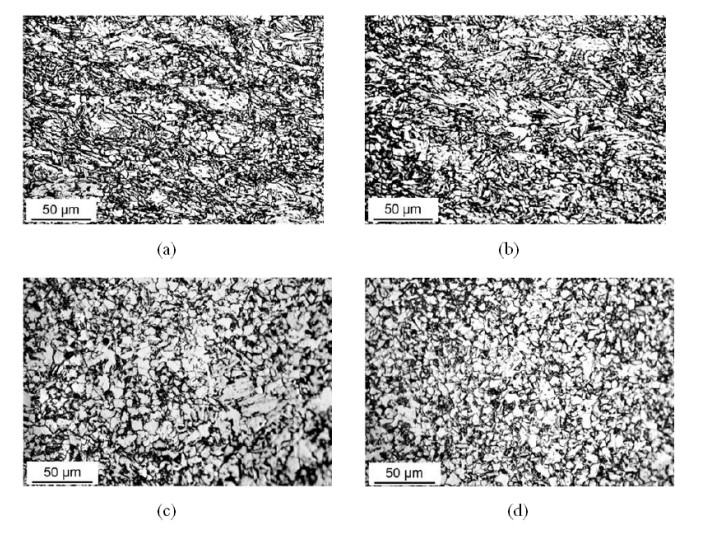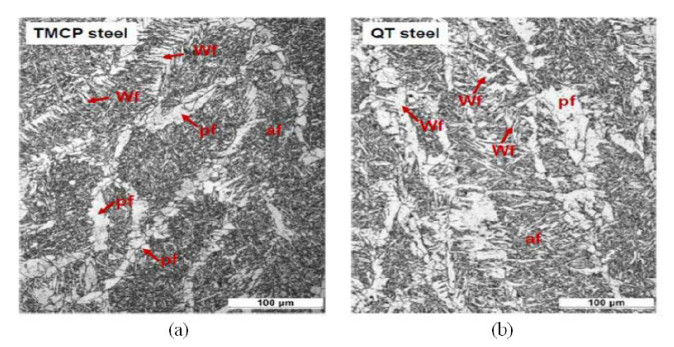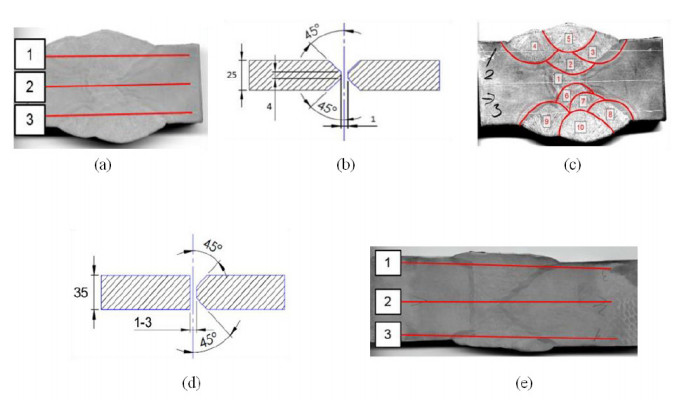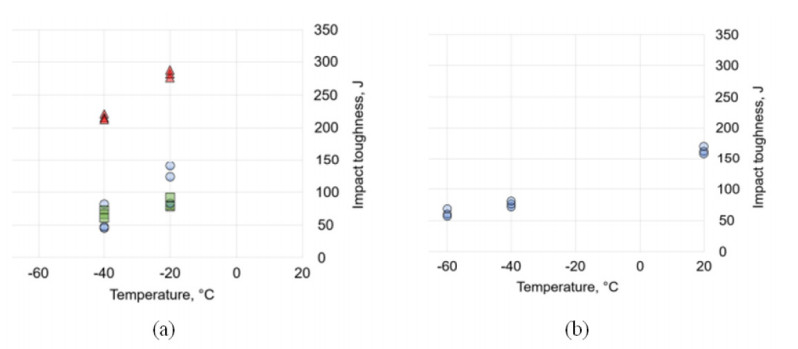1.
Introduction
In the recent decade, Arctic engineering has been experiencing rapid growth and development. The development has been driven primarily by high price of oil, and secondly by considerable progress in the development of wind energy turbines, which made them suitable for Arctic operations. Currently, there is a lull in interest in Arctic engineering as oil prices are low. However, oil and gas operations are not the only area in which Arctic engineering practices and approaches can be applied. The Arctic has considerable green energy potential, new feasible transportation routes such as the Northern Sea Route and Northwest Passage, which can potentially bring substantial economic benefits.
Structures and vessels used in the Arctic region must be able to withstand the extremely low temperatures in the region, which can drop even below −60 ℃. The Arctic temperatures are not dangerous for metal structures over short periods of time; however, prolonged periods of relatively low temperatures are the cause of numerous serious accidents. These conditions accelerate the material degradation rate and thus shorten the time to failure of structures. Strong winds of up to 50 m/s also affect working conditions [1]. Due to the remoteness of Arctic locations, construction cost penalties increase tremendously with increased weight of construction materials and equipment.
The most common high strength steel (HSS) types, i.e., steels with yield strength more than 460 MPa are thermo- mechanically controlled processed (TMCP) steel and quenched and tempered (QT) steel. TMCP is currently in the research spotlight because, for the same mechanical properties, TMCP steel has a lower carbon equivalent (Ceqv) than QT steel. The weldability of the steel depends on the equivalent carbon it contains, steels with low Ceqv have better weldability. Arctic structure components have to meet the following criteria: Low temperature toughness down to −60 ℃; high yield strength to ensure the capability to withstand static and dynamic wind and wave loads according to the operational parameters; Isotropy of properties across material dimensions to ensure high strength; Resistance to brittle fracture at low operation temperatures; Reasonable weldability with minimal preheat and post-heat temperature required to ease the assembly process; and moderate corrosion resistance in sea air (if applicable).
Welding is challenging in the Arctic environment, as many dramatic failures occur due to improper welding procedures and methods. Under arctic conditions, the main challenge in welding is the prevention of brittle fracture formation in the weld and the base material. One solution to achieve sufficiently low transition temperatures of the weld is the use of an appropriate welding process with correctly selected parameters. In general, the required service temperatures for structures and ships should be taken as −60 ℃. For most Arctic structures, the design temperature should be lower than −40 ℃. For example, the design temperature for the first Arctic offshore platform, Prirazlomnaya, has been down to −50 ℃. The design temperature for offshore structures planned for operation in ice-covered basins of the Arctic should be about −60℃ and for structures in open basins −35 ℃ [2]. There are substantial differences in materials and welding requirements for vessels operating in the Arctic, ice-breakers, floating and stationary offshore platforms and other structures.
According to studies by Turan et al. maintenance costs, including welding, in the marine sector represent between 20 and 40 percent of total operating expenses [3]. Corrosion has been identified as the most important degradation mec3hanism in this sector, as it can lead to catastrophic failures, estimated at 90% [4].
One of the most widely used cold strength tests is the Charpy impact energy test, which determines the impact energy required to break the specimen. In general, according to most standards, the required impact value is about 10% of the yield strength of the steel at the design temperature. Various factors contribute to the Charpy impact test values. These include the number of welding passes, the austenite grain size prior to welding, the volume fraction of the ferrite phases and the width of the acicular ferrite lath (AF). For shipbuilding, CTOD (Crack Tip Opening Displacement) testing is often not required as part of the welding process qualification, due to the relatively small thickness of the plates (up to 20–30 mm), and the steels are generally not very strong (up to 350 MPs yield strength), except for icebreakers. For oil and gas exploration, primary structures are often made of 420 MPa steel with thicker plates (40–50 mm) than for ship hulls. For Arctic areas, discussions are underway to require CTOD testing for thicknesses as low as 20–30 mm [5]. Although long arctic winters have a profound effect on the ductility of carbon steels, most structural steels easily meet the toughness requirements at such temperatures. However, welded parts are much more susceptible to fracture toughness problems at low temperatures [6]. In particular, the weld metal and the heat-affected zone of the weld often show insufficient toughness at low temperatures. Qualification of the HAZ (heat-affected zone) toughness by weld samples is normally carried out in accordance with recognised standards such as EN 10225 or API RP 2Z. API RP 2Z specifies the HAZ properties to be achieved (between 0.25 and 0.38 mm), whereas no requirements are mentioned in EN 10225. However, ISO 19902 states that properties between 0.2 mm (after post-weld heat treatment) and 0.25 mm (as welded) should be achieved when the material is qualified according to EN 10225. The qualified range of manufacturing parameters (chemical composition, rolling, cooling) is defined in API RP 2Z, whereas Annex E of EN 10225 is more of a guideline for the purchaser for specific qualification purposes [7].
However, welded steel more often passes Charpy tests than CTOD tests, and difficulties in meeting CTOD values hinder the application of high-strength welded steels of large thicknesses. The most critical part for compliance with CTOD criteria is the coarse-grained component of the HAZ of welded steels. It has been found that the AF is the most desired microstructure in the weld metal [6]. Other steel grades have also been developed for arctic service, and welded steels have achieved Charpy test values (-60ÛC) of over 40 J and satisfactory CTOD values (up to 0.35 mm at -60ÛC). Some of these steels have been used in recent Arctic offshore projects. Arctic industrial companies are interested in developing thick HSS plates with increased tensile strength to reduce the weight and cost of structures and icebreakers. On the other hand, ductility decreases with increasing tensile strength and welding become more difficult. Steels with yield strengths up to 500 MPa are used in structural applications. In these cases, welding is usually carried out with a heat input of up to 3–3.5 kJ/mm, as higher heat input is detrimental to the performance of low-temperature welds. Other major challenges associated with welding in the arctic region are residual stress control, and failure and fracture of weld joints due to cold cracking and severe distortion.
Specific requirements for testing the base metal and welds of structures are listed in Table 1, which compares the requirements of the most commonly used standards for Arctic conditions.
Some research has been done on the applicability of TMCP and QT high strength steels for the Arctic region. Lee et al. [10] reviewed the use of TMCP steel SM570-TMCP in cold regions and concluded that the selection of a suitable welding process is essential for utilization of TMCP steels in such environments. In other work, Yan et al. [11] investigated the mechanical properties of QT S690 steel in Arctic conditions and found an increase in yield and tensile strength, when the steel is subjected to low temperatures. Further work by Yoo et al. [12] focused on the fracture characteristics of low-carbon steel in Arctic conditions. The study demonstrated that the arctic environment could promote microcrystalline film formation on ferritic stainless steel by immersing steel samples in Cl-based condensate water. Zhao et al. [13] evaluated the effect of thermo- mechanical control process on microstructures and mechanical properties of commercial pipeline steel under arctic conditions. The authors have carried out previous research work on the topic of three wire SAW welding of high-strength steel for shipbuilding a pplications [14]. The authors examined the corrosion characteristics of welded low-carbon steel for offshore structures in arctic conditions at very low temperatures. They studied corrosion rates and corrosion trends in submerged and splash zones under simulated conditions. The results of this study showed that reverse corrosion on welded materials under arctic corrosion conditions is significant due to the appearance of cracks in the rust layer.
However, there is a need to explore the utility, developmental opportunities, and parameters of the SAW process for welding thick plates of high-strength cold work steel. This study will provide a thorough understanding of the welding and materials science background, which includes the quality requirements of welded joints for arctic service.
2.
Materials and methods
The experiments were performed with a TMCP E500 steel plate (25 mm) and a QT F500W steel plate (35 mm). Their chemical compositions are shown in Table 2.
The submerged arc welding (SAW) method and the following consumables were used: welding wire Sv10GNA, diameter 4 mm, and flux: ESAB OK 10.62. Table 3 shows the different parameters used for the heat input.
Evaluation of the steels included mechanical and cold-resistance properties assessment of base metal and welds. According to specification, F500W steel can be used for Arctic applications at temperatures as low as −60 ℃ (letter "F") and has improved weldability (letter "W"). Steel E500 is designed for Arctic applications at temperatures as low as −40 ℃ (letter "E").
Microstructural analysis has been performed using Zeiss Axiovert 40 MAT microscope with ×500 magnification. The samples were prepared in accordance with GOST 5639. The weldability of steel is generally defined by the equivalent carbon content (Ceqv) and the critical metal parameter (Pcm). The Ceqv and Pcm are defined by the chemical composition of the steel and calculated using the following formulas Eqs 1 and 2 [15,16]:
The cooling continuous temperature (CCT) diagram was obtained using JMatPro software.
Mechanical properties were determined by static tensile test of cylindrical samples (specimen type 3 no. 4: head cylinder diameter 16 mm, initial cylinder diameter 10 mm, initial length between marks 50 mm) and full thickness test. The static tensile tests were conducted to determine the ultimate tensile strength, maximum elongation, relative contraction ratio in thickness direction and relative uniform elongation. Test specimens were prepared according to ISO 5178-2001 and ISO 6892-3-2015.
The steel plates were welded by submerged arc welding process with undermatched welding wire to form butt joints, welding parameters are consumables data are presented in Tables 4–6. SAW has been operating in DC mode.
In the present work, a Vickers Hardness test (HV5 and HV10) of the weld samples has been performed on 05 samples and the average results were retained. Hardness has been measured in three lines parallel to the plate surface in the transverse direction as indicated in Figure 4. First line is 2–3 mm below the surface of the steel plate, the second line is the central line of the weld, and the third line is located on the same distance from the central line as the first line, but in the opposite direction.
Finally, the CTOD (crack tip opening displacement) test was used to measure the resistance of the material to crack propagation. The CTOD test was carried out in accordance with BS 7448 P.1 (BS 7448-1:1991). Fatigue crack growth was evaluated on a Schenck PEZ-4371 universal testing machine with a load of 250 kN at a frequency of 5–8 Hz, with a number of sample loading cycles of at least 55000.
3.
Results and discussion
Analysis of the two steel grades included chemical composition assessment, microstructure examination, mechanical properties tests (Table 7), impact toughness tests at low temperatures and special cold-resistance tests. Information on steel plate thickness, manufacturing method, grades and chemical compositions were measured and is given in Table 2. The F500W steel plate is made by QT method, and the E500 steel plate is made by TMCP. Therefore, E500 and F500W steels chemical composition is significantly different.
E500 TMCP steel has lower values for both Pcm (0.19 vs 0.22) and Ceqv (0.41 vs 0.46), and it can therefore be considered as having better weldability properties. Microstructural analyses using the Zeiss Axiovert 40 MAT microscope at ×500 magnification revealed that the E500 steel is composed of 50% bainite. The F500W steel has a total bainite content of less than 20%. Such a higher content of batten bainite contributes to the increased strength of the high-strength low-carbon steel, which can be confirmed by mechanical tests (Table 7): The tensile strength of E500 steel is 635 MPa and the yield strength is 550 MPa, which is higher than the corresponding values for F500W 35 mm steel: 615 and 520 MPa, respectively. CCT diagram for F500W shows steel microstructure at various cooling rates (Figure 1).
Higher lath bainite content contributes to the increase in strength of high strength low-carbon steel [17]. Figure 2 shows images showing the microstructure: a, b show the microstructure of E500 steel with 50% bainite in the lath and 10–15% ferrite; while c and d are those of F500W steel with 20% bainite in the lath and less than 15% ferrite obtained by the Zeiss Axiovert 40 MAT.
Submerged arc welding introduces significant heat input, which melts the base metal and consumables together. The resultant microstructure of the weld often includes bainite, intragranular nucleated acicular ferrite and Widmanstätten ferrite [18,19,20]. Clearly, due to melting, various zones of the HAZ experience different temperatures, which results in different microstructures, some of which are coarse grains and might result in brittle behaviour [13]. Similar problems and arguments are valid for flux cored arc welding and metal cored arc welding (FCAW/MCAW). As SAW is limited to horizontal flat positions, FCAW is used for welding in vertical and sideways positions, which are often required in shipbuilding applications. The heating and cooling rate during welding is dependent on several factors: the thickness of the metal, the welding current, the temperature of the metal to be welded, the number of passes in the welding, and the welding heat input. Each of the above factors, individually and combined, can significantly affect the formation of microstructures in the HAZ.
Cold-resistance properties often reduced in welded high strength steels joints. Most welding processes bring inevitable microstructural changes to the steels, which occur as a result of high heat input during welding (Figure 3). Microstructural changes in the weld are influenced by the steel alloying elements, the steel production method, and heat input, among other factors. The heating and cooling rate during welding is dependent on several factors: the thickness of the metal, the welding current, the temperature of the metal to be welded, the number of passes in the welding, and the welding heat input.
The chemical composition of the weld metal is presented in Table 8. The chemical composition of the E500 and F500W steels welds welded by SAW are almost identical.
After the welding process, specimens were prepared for mechanical tests. The results of the mechanical properties of the weld metal are presented in Table 9. The QT F500W steel plate has higher yield strength (σ0.2) and tensile strength (σt) values than the other TMCP E 500 steel plates. The test results show a significant difference in elongation (δ5) values. The QT F500W steel plate has a 5% lower elongation value than the TMCP E500 steel. The variation in tensile strength and yield strength can be explained by the high manganese content of SAW welds (1.24%).
In general, higher hardness values are obtained with HV5 method compared to HV10 because smaller part of the microstructure is measured. Therefore, if hardened structures like martensitic and/or bainitic are present in the HAZ there is the risk that a measurement is executed on a hardened structure only in case of HV5 where HV10 measures a larger area by which the maximum hardness measured will become a little lower [14,17,21]. Consequently, HV5 measurements can be accepted if they are below the required value of 325 HV. Welds are shown in Figure 4 and hardness test results are presented in Table 10.
The hardness of the weld was measured in the base metal region, HAZ, the fusion line region, and the weld metal. The highest value was recorded in the E500 fusion line, which was 307 HV. The others are relatively low and do not exceed 350 HV, and are consequently, acceptable according to the requirements.
As can be seen from Table 11, hardness does not exceed 380 HV, therefore the welds meet the hardness requirements of EN ISO 15614-1:2017 standard. When comparing QT steels with TMCP steels, there is a distinct difference in the HAZ hardness as seen from the results of the hardness tests. When constructing steel structures using TMCP steels, the HAZ hardness must be taken into consideration [14,17,21]. When using undermatching filler material this is not of the utmost importance, however when using matching filler material, the HAZ hardness should be closely monitored. The cold- resistance properties of the weld joints were assessed by Charpy V-notch impact tests and CTOD tests. The results of the Charpy V-notch impact tests are presented in Figure 5 and Table 11.
Charpy V-notch test results showed that F500W steel has better impact values in most cases compared to E500 steel. Both plates of steel have the lowest impact values in the weld metal and fusion line regions. The impact strength values of the E500 weld metal are at the limit of acceptable values (47 J) at −20 and −40 ℃ while the impact values of the F 500 W weld metal are acceptable at −40 and −60 ℃. All average impact strength values are acceptable.
CTOD tests of weld metal E500 (according to standard BS 7448) with a notch on the fusion line were conducted, and the average result has been found to be 19 mm at −40℃ (Table 12).
The analysis of the results showed that the tested steel plates have sufficiently high Charpy impact energy values at the studied temperatures; moreover, these steels can be used at very low temperatures, down to −60 ℃. This is important because some standards require the design temperature to be 20 ℃ or even 30 ℃ below the actual ambient temperature. Most specimens fractured in the ductile fracture mode, containing small regions of brittle fracture, this is explained by its chemical composition. The impact strength values are well above the minimum required values for both steel grades. The fracture surface images of the E500 steel show some brittle fracture regions.
Therefore, the similar results of the TMCP E500 and QT F500W tests indicate that the 35 mm thick QT F500W steel performs significantly better than the 25 mm TMCP E500 steel.
4.
Conclusion
Advanced and efficient welding technologies are undoubtedly needed for joining HSS in the construction of Arctic offshore structures. Research is ongoing to develop further these technologies and also to uncover new welding technologies that will ensure that the desired weld quality and mechanical properties (in particular, high toughness) are met with increased productivity rates. Case study describes welding TMCP E500 and Q & T F500W steel plates.
● E500 steel base metal tests showed applicability by criteria of Charpy test at temperatures as low as −85 ℃; and CTOD test showed E500 applicability to as low as −55 ℃. E500 welding tests showed, that Charpy impact toughness values for SAW welds can be utilized with some limitations at −40 ℃. CTOD of the weld joint showed that E500 applicability at −40 ℃ is satisfactory just on the borderline of the standard requirements.
● F500W steel shows very high values of Charpy-V impact energy test reaching 82 J at −40℃ and exceeding 60 J at −60℃. However, this steel contains higher alloying content.
The Submerged Arc Welding (SAW) method and the following consumables are recommended for structures located in arctic conditions: welding wire Sv10GNA, diameter 4 mm, flux ESAB OK 10.62, current 215 A and voltage 26.6 V.
Acknowledgments
The authors recognized the support by the Division of Welding Technology, Department of Engineering Science, The Production Technology Centre University West, SE-461 86, Trollhättan, Sweden.
Conflict of interest
The authors declare no conflict of interest









 DownLoad:
DownLoad:
